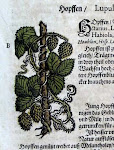I always tell students: reading is a skill that takes some effort on the part of the would-be reader, and in addition, the effort of someone willing to inculcate that skill. One may therefore apply the legal phrase , "cui bono": to whose benefit? In other words, people generally learn to read only when it is useful and/or when society as a whole considers it useful. It is not surprising that US plantation owners forbade their slaves to learn to read. It is likewise no coincidence that (1) already in the late fourteenth century, Florence--a center of commerce and politics--had basic public education (for both boys and girls) and an army of notaries, lawyers, and civil servants, whereas (2) in largely rural Central and East Central Europe, illiteracy is generally said to have remained at about 70 percent at the end of the eighteenth century. In fact, as late as 1881, in the backwaters of the Austro-Hungarian Empire, illiteracy apparently ranged from 57 to 83 percent (though not among my ancestors).
In 1776, the Prussian landowner and pedagogue Friedrich Eberhard von Rochow described the goal of education for the common people as: "to form good Christians, obedient subjects, and capable farmers." Scholars continue to debate the developments in this threshold era between the popular Enlightenment and the beginnings of a modern popular education movement--circa 1770-1830--precisely because it was so crucial but the evidence is so limited or laconic. Among the issues are both the motives of the reformers and the agency of the peasants. As far as we know, traditional rural reading consisted primarily of religious texts; works of a sentimental, escapist, or sensationalistic character; and above all, calendars or almanacs. Still, even if we have some idea of what the peasants read, or what others wanted them to read, it is much more difficult to know how they read.
The calendars ranged from minimalist types containing the days of the year and meteorological or other concise practical information to more expansive ones that also contained a wide range of other content, from anecdotes to superstition and fantastic tales. Collectively, they were the equivalents of the well-known US Old Farmer's Almanac and Farmer's Almanac (founded 1792 and 1818, respectively, and both still published today). Reformers sought to adapt the form as a vehicle for their ends, and during the French occupation, there were even revolutionary calendars.
One example of the minimalist variety of calendar in my personal library is:
Allgemeiner Kalender auf das Jahr Christi 1828, welches ein Schalt-Jahr von 366 Tagen ist. (Universal Calendar for A.D. 1828 [literally: the Year of Christ 1828], which is a leap year of 366 days.). Steyr, printed by Joesph Greis.
 |
| 87 x 112 mm |
The booklet contains the more or less obligatory array of features.
The woodcut cover illustration was a stock piece, reused year after year, part of the "branding" of the product. It can be tempting to overinterpret such images, about whose origins and intent we know far too little: temptation is often a thing best resisted. Against the backdrop of a rural landscape--castle- or church-like structure at left, and large, comfortable dwelling at right, a middle-class man, identifiable by his garb, observes the heavens with a telescope--emblem of science and erudition. Next to him, a peasant with a spade stands and extends a free hand: in greeting? explanation? We cannot tell.
Still, at the least, the image clearly serves to locate the calendar and its intended purpose in the social and intellectual world of the day, between learned and popular culture. Taken together, the two figures encompass the standard content of the book: calendars for each month, along with meteorological information and folk wisdom.
As the location--Steyr is in Upper Austria--indicates, the calendar is aimed at a Catholic audience in the Habsburg Empire. Accordingly, the first pages of the calendar are devoted to crown and church.
At left: the birthdays of the members of the royal family of Austria.
At right:
top: the Numerus aureus, solar and lunar cycles, and the like, necessary for the calculation of religious holidays in the Gregorian calendar (these would have required the use of additional tables or other information), as well as the time from Christmas to Ash Wednesday.
middle: moveable feast days, according to the Roman Missal.
bottom: the Ember Days.
Each monthly opening began with the names in both the modern and traditional Germanic form, and a woodcut emblem of the month including the zodiacal sign and characteristic activities of the season--here, for January: Virgo, a domestic meal, and warming oneself by the fire.
Additional information included length of the day, phases of the moon, sunrise, and general weather conditions. Reflecting the defining role of the Catholic Church, each day is marked by its saint's name, and the weeks, by a relevant Scriptural passage.
On the relevant days, as the previous opening explained, obligatory fast days were marked with a red cross.
The pages following the monthly calendars provided additional information on phases of the moon and length of daylight, as well as traditional folk wisdom.
E.g. for January:
When on S. Vincent's there's sunshine, one therefore hopes for good wine.And for February:
When it rains after the new moon, then it will rain for a full month.In this case, we even know something about the printer-publisher, Greis.
He occupied a historic Gothic house located at Grünmarkt 7. The original structure burned in 1552 and was rebuilt and then occupied by many generations of owners--from 1732 into the twentieth century, exclusively printers, who passed the property along to others in the trade through marriage (as was not infrequently the custom in that day) or sale. Joseph Greis (b. 1773) began as a compositor (typesetter) in the shop and acquired it from Franz Joseph Medter in 1804. 1827 was evidently a banner year for him: he married (for the second time) in January, and on 26 September, he also opened the town's first bookshop (Stadtplatz 23). In fact, it would have been just about this time that he issued the calendar that is our subject here: calendars and almanacs generally appeared at the start of the autumn season so that customers could purchase them conveniently in advance of the new year. (This was in particular important in the case of the more elegant literary or other Taschenbücher or almanacs--in the US, we would call them annual "gift books"--which sometimes had to go through several printings, depending on demand.)
In the mid-1790s, in the context of the French Revolution, Austria and Prussia restricted circulation of some foreign "calendars," so some publishers of almanacs or gift books simply deleted the calendar texts in editions destined for those regions.
This copy bears a revenue stamp, for 3 Kreutzer. Under the revised stamp tax regulation of 1819, Austrian calendars were taxed at either 2 or 3 kreutzer--whereas the more elegant almanacs that contained a calendar required a far higher tax of 12 kreutzer: as clear a sign as any of the economic and cultural hierarchy at work here.
Precisely because the more humble publications such as that of Greis were ephemeral--intended for practical use of limited duration--most have disappeared. They wore out and were thrown out. This hardy survivor shows his wounds.
A complete copy (here, the 1823 volume via GoogleBooks) ran to 20 leaves (40 pages), but my copy has only 30 complete pages and a fragment of 31-32. Still, it somehow survived.
In fact, the three large notches on the left, or binding, edge, indicate that it must have been part of a larger volume. (They are too large for what would be required to stitch together a work of this slim size, and if that had been the only purpose--that is, if it stood alone--they would not have been removed.) Owners sometimes bound together multiple issues of the same serial, and sometimes combined publications of different titles within the same volume. We may assume--but not be certain--that the former was the case.
But the question remains: why would one have kept a work designed to be ephemeral? We know a good deal about some of these publications as texts, material objects, and objects of commerce--but still far too little about how they were actually used.














